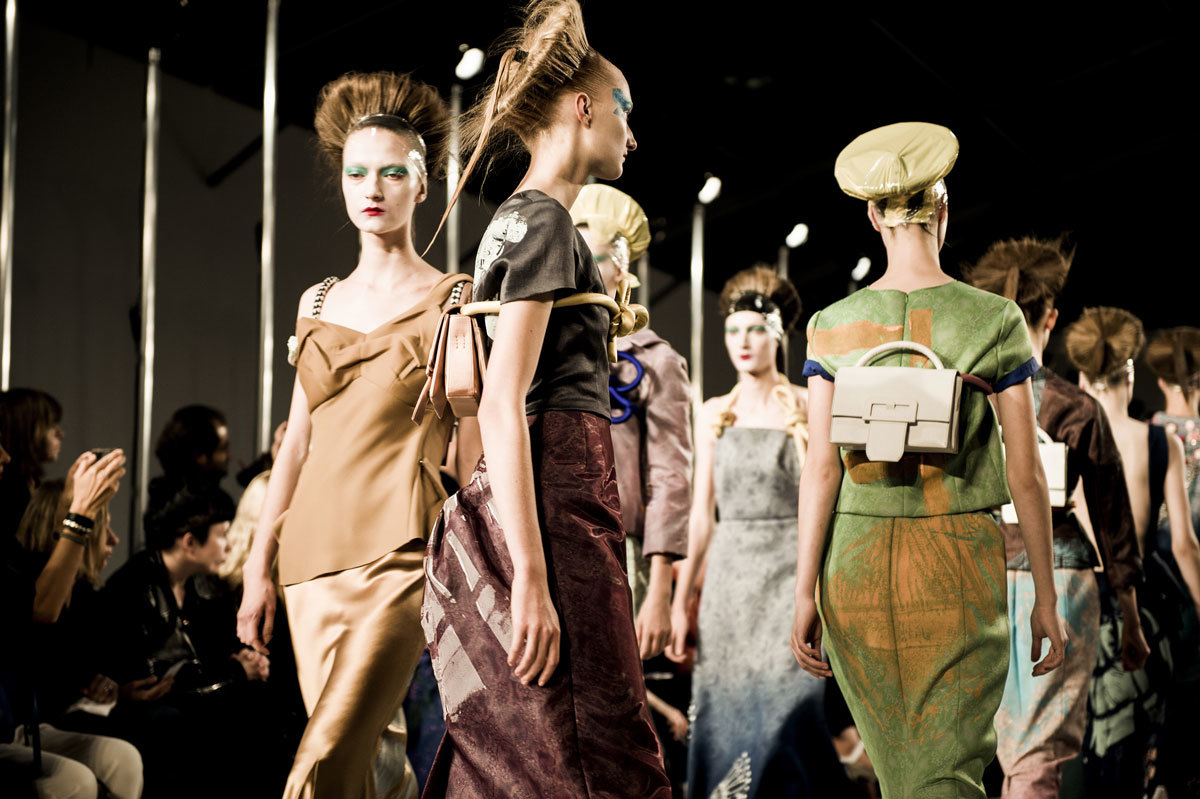Sometimes fashion has a way of piecing it all together for you. Take the second day of shows in Paris where Nadja Swarovski continued her family’s 120th anniversary celebrations with a soiree at the majestic Salons France-Amériques across from the Grand Palais. In the catalog, a full page was devoted to that iconic – and the word isn’t used lightly – portrait of Dame Elizabeth Taylor as Cleopatra, all done up in Old Hollywood Egyptian glam. It struck a chord—remember that Marc Jacobs show in New York three weeks ago, all about that classic idea of mid-century movie magic and the golden age of American showbiz? If London and Milan had detoured us with all their mad fun, on the second day of shows in Paris, Maison Margiela, Dries Van Noten, Rochas and Yang Li drew a clear line back to that idea of showmanship, the unapologetic glamour of the 50s, and the contrasting hardships that loomed in its shadows back then, just like they do now.
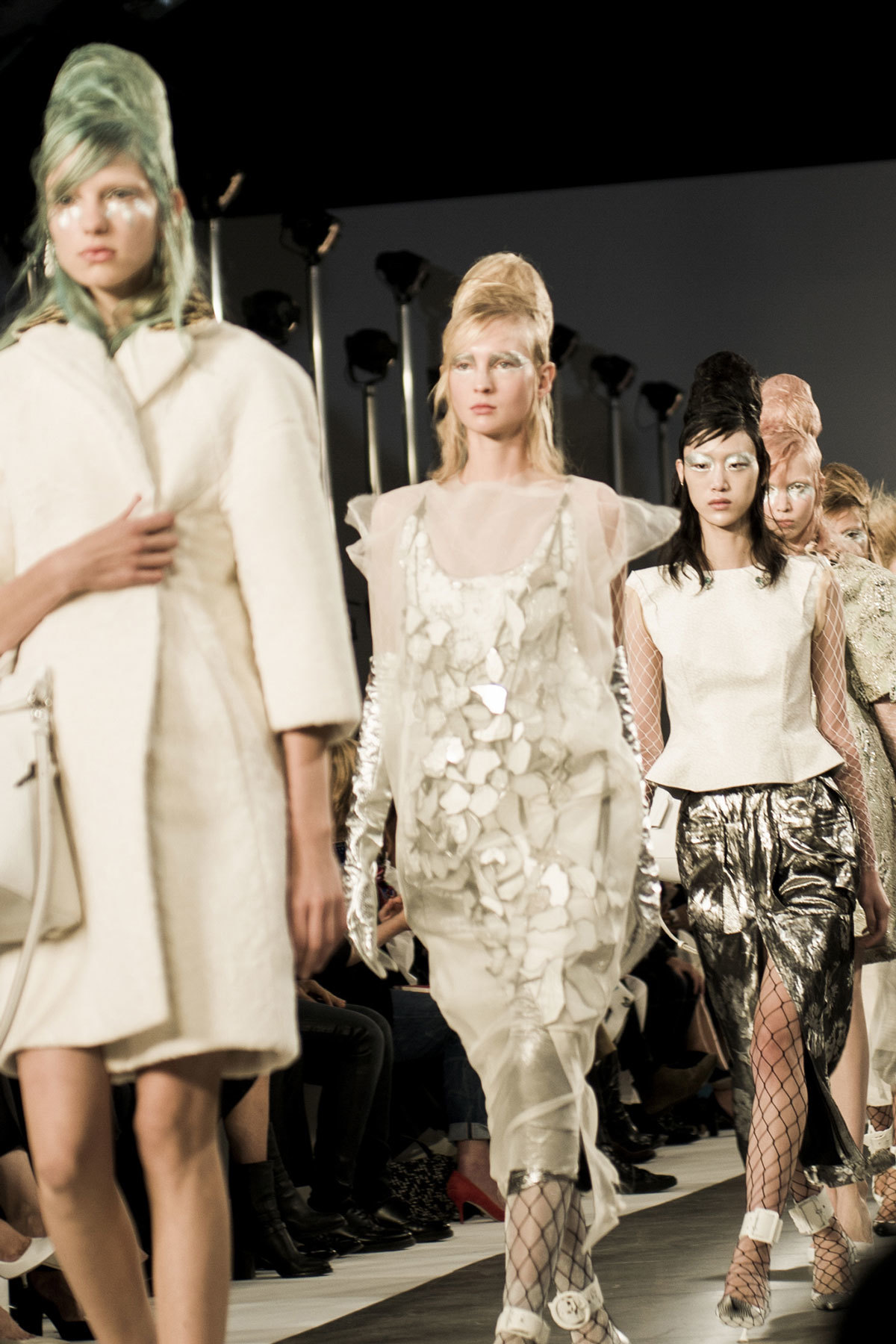
The only thing that would make the Maison Margiela experience more epic than it already is would be John Galliano’s point of view backstage post-show; to get a glimpse into his genius mind as he dreamt up a breathtaking mid-century icy metallic dress, coated in silvery sheen and netted in leaf embellishment, then veiled in light, sheer chiffon. In its relationship with Galliano over the years and recently in particular, fashion has inadvertently created its industry’s biggest enigma: the returned messiah, more complex than ever and most paradoxically, now silenced by his position. At Maison Margiela, house dogma decrees that you don’t give interviews or even take a bow after your show, and when your collection is clearly trying to communicate more about the world we live in than most other efforts on planet fashion, that makes you the most enticing designer du jour.

In lieu of clarification, let’s interpret: for his second ready-to-wear collection for the house, which had guests in a state of swoon upon exit, Galliano seemed to be tackling the fake. Shiny plastic effects appeared throughout the show, backed up by metallics and that superhero eye make-up everyone was already reading into last season. These elements appeared on a 50s silhouette, often made more debutante than socialite housewife in the sea of girly, princess-y detailing that embellished the garments. In that sense, it was hard not to detect a certain escapist mid-century idea of eerie perfection in Galliano’s impeccably theatrical fashion statement. It seemed like a comment on a kind of chaos where prim and proper, fake plastic-y perfection is employed as a form of shield against what we don’t want to deal with, much like it was in that tumultuous post-war age.
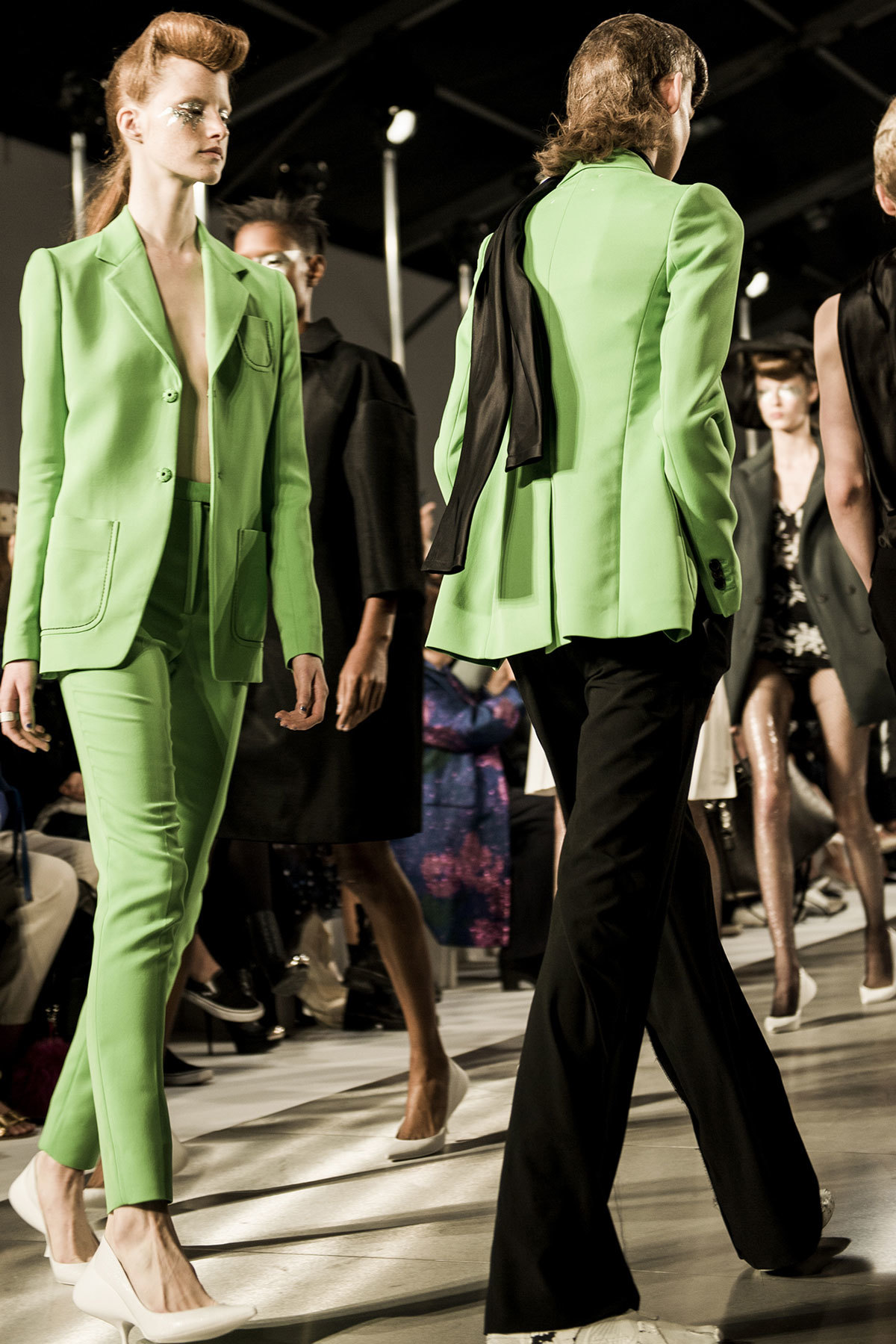
If that was the case, Galliano captured the spring/summer 16 season’s already well-established spirit of fabulous fun with superb precision, effectively using humorous and glamorous elements to cement a view of fashion frivolity as thinly veiled, desperate escapism. God he’s good, and all the Japonaiserie that followed only made things more brilliant. Here was Galliano’s interpretation of human restraint – look at those bows tied tightly around the chests like on some twisted geisha – and that tension between the introverted and the flamboyant, or the cynical versus the emotional, or the even male versus the female as elfin boys on the runway so elegantly illustrated. Galliano likely didn’t sit down to design a collection that would reflect wars or mass-migration or any of the other current crises we’re all reading about in our seats these days waiting for fashion shows to start, because that isn’t how it works. But he certainly managed to portray our state of mind.
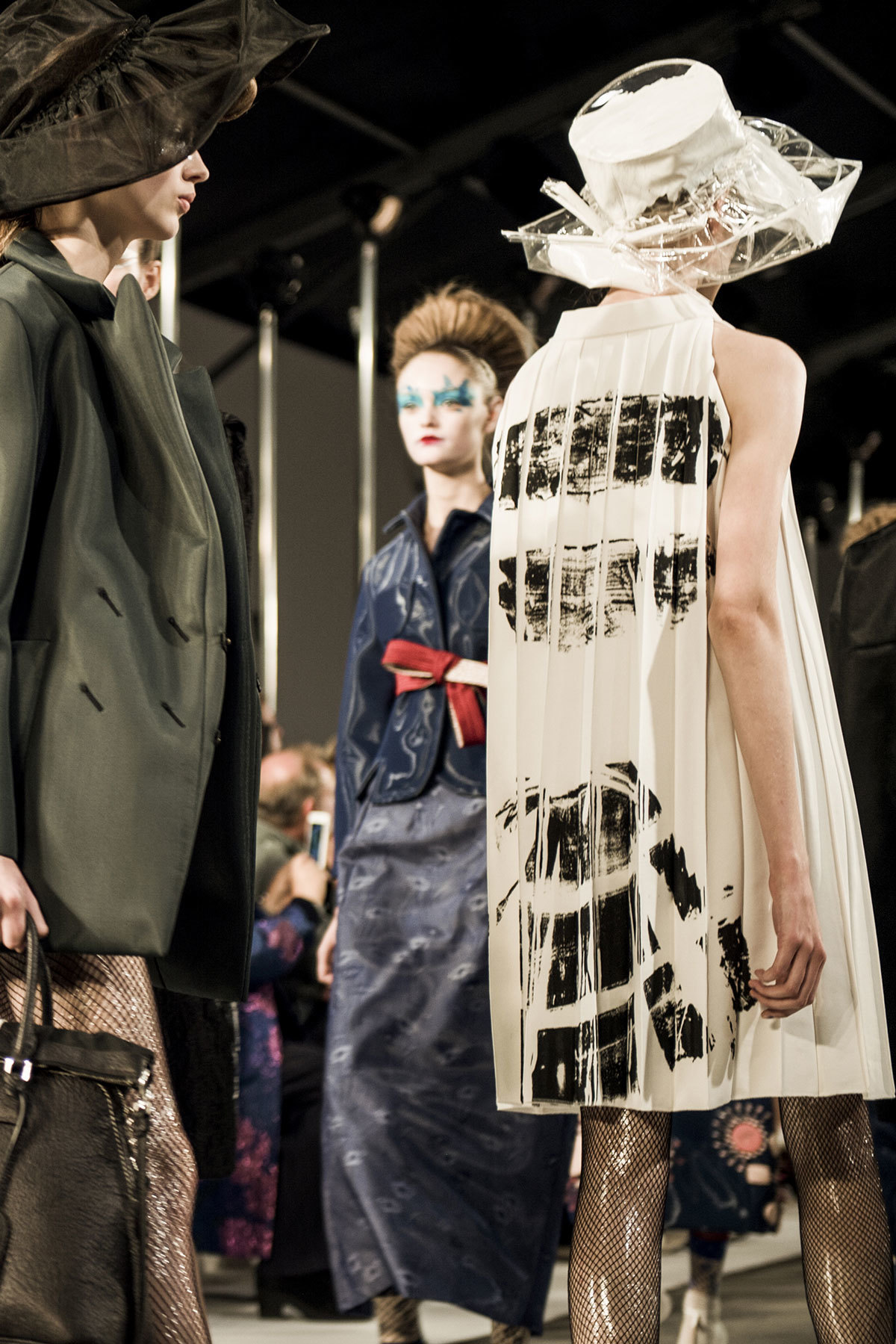
If Galliano’s choppy, panicked FKA Twigs soundtrack (Glass and Patron) provided a contemporary feeling of angst in the midst of all the glamour, Dries Van Noten’s live string quartet Balanescu – imported from Brussels – embodied this designer’s mind for Old Hollywood showmanship. You need only walk into the venue, a kind of hangar on rue de Chemin Vert used also for his surrealist menswear bonanza this summer, to understand the feeling he was trying to convey: glamour and gloom, a subverted take on flamboyance, which was Van Noten’s word of the season. “It’s on the verge of too much,” he said backstage. “Too flamboyant sometimes, little bit flirty.” His favorite model Hanne Gaby Odiele was dressed in a 40s skirt and top combo with trippy purple florals splashed all over it, her arms covered in the sick alligator-like print of contrasting long gloves like some lethal lady who lunches.

“Eccentric can be a sad old lady with 25 cats,” Van Noten said. “A flamboyant lady is a lady who wears and dares and has fun, and that was important for me this season.” The show had all the sophistication of that golden age of showbiz, wrapped in Van Noten’s tropical world of color, his shiny surfaces, hard hits of fuchsia, and sudden ruffles, so dramatic it made you think of those psychedelic rodeo costumes—the Rhinestone Cowboy. “Sufficiently nuts to be acceptable,” Nancy Rhode, Van Noten’s stylist through fifteen years, quipped backstage, and that could have been the tagline for the entire season so far. Van Noten’s influence on the global fashion picture is immense, and you couldn’t help but think of his men’s show in June – that 50s collection embellished via Schiaparelli and Dalí madness – which may have stood alone in its reference amongst other spring/summer 16 men’s shows, but now made perfect sense as an early influencer for the women’s season.
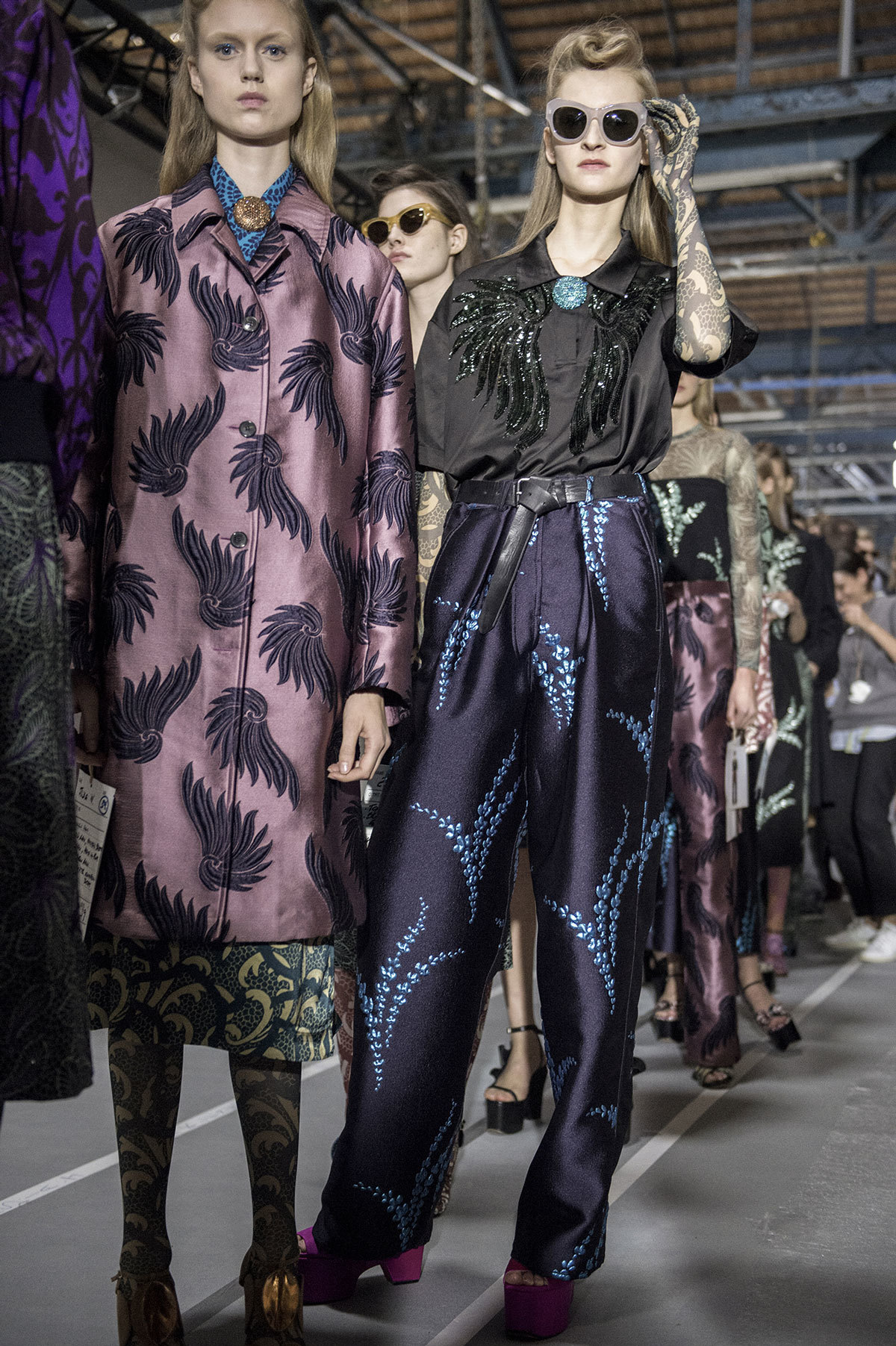
Gala Dalí just happened to play muse to the Rochas collection, which was every bit as mad as this second day of Paris shows was long. Embroidered giraffes-in-the-sun motif, anyone? “Jacquard popcorn explodes in miniature fireworks,” the show notes read. The 50s made it to Rochas, too, in what couldn’t be described better than prom dresses, decorated with bows and lace and embroidery and all the trimmings of that dream of Old World glamour. In their state of overload, they gave off the same sense of madness seen elsewhere in the fashion landscape this season and the distinct feeling of gloom, which Yang Li similarly hit on the head earlier that day. Inspired by the song Screen Shot by Swans, Li embellished his gothic, romantic take on glamorous socialite eveningwear with words from the lyrics such as “No dream” and “No sleep”, keeping the eeriness intact all the way. In the equal parts cheerful and cautionary words of Old Hollywood superhero Bugs Bunny, “That’s all folks!”
Read more i-D fashion month coverage here.
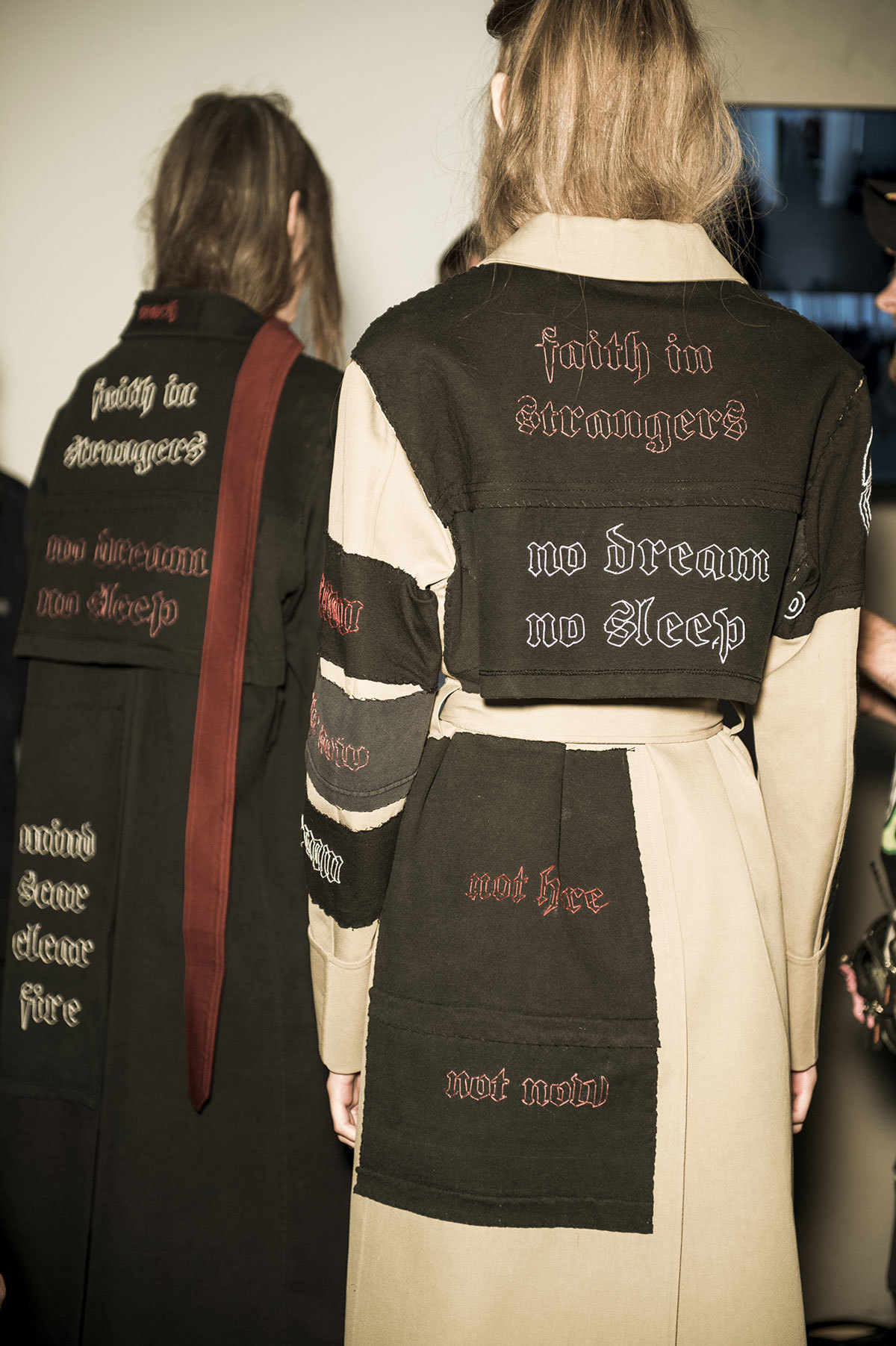
Credits
Text Anders Christian Madsen
Photography Jason Lloyd Evans
